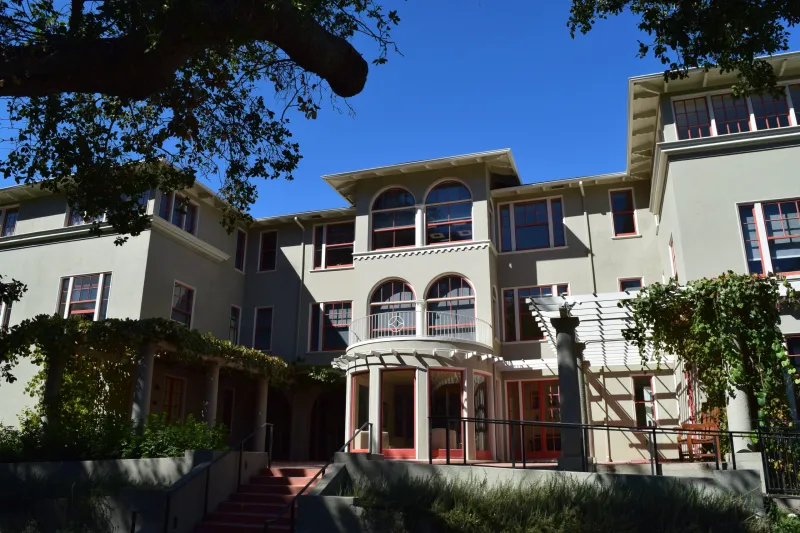Reported cases of sexual harassment, sexual violence and gender discrimination on campus increased by 118% in the past year, according to Stanford’s Annual Title IX/Sexual Harassment Report which was released on Thursday.
Reported incidents increased to 214 in the 2021-22 academic year from 98 the previous year. This was a reduction from 279 during the 2019-20 academic year. The dip and subsequent increase was, in part, due to the campus population being “greatly reduced due to COVID restrictions,” wrote University Provost Persis Drell in an email to the community.
According to the report, the SHARE Title IX office is engaging in “prevention education” to ensure that the University can “decrease the incidents of sexual misconduct.” A few examples listed in the report include the Above and Beyond Sex Ed workshop in which frosh participate during New Student Orientation and the “multi-hour training” that all faculty, staff, graduate students, post-docs and other members of the Stanford community were to complete.
The report seeks to raise “awareness of the matters that Stanford receives and responds to, and that awareness – in turn – may encourage an individual to bring forward a concern that they may have experienced or witnessed.”
The report acknowledges that “many instances of gender discrimination, sexual harassment and violence are never reported to the university.”
Stanford Law professor and Title IX advocate Michele Dauber wrote that the report shows “once again, that Stanford is failing to hold perpetrators of assault and abuse accountable. As a result, survivors are not reporting to the university when they experience gender-based violence and harassment.”
She pointed out that 40% of female-identifying students experience some sort of sexual violence during their tenure at school, but yet “only a handful made a formal report.” According to Dauber, of those who made a report, only a select few cases were investigated, and of those cases, even fewer met consequences.
Under the category of sexual harassment in workplace or academic settings, the report included 21 formal completed investigations which led to 10 findings of policy violations. This was an increase from the nine formal completed investigations in the 2020-21 report, where four policy violations were documented.
There were 97 cases where the University decided that there was “not enough information to proceed.”
Sexual Harassment/Assault Response & Education (SHARE) Title IX Director Stephen Chen wrote in an email to The Daily that “cases in which an impacted person chooses not to proceed with a formal complaint are often classified in our annual report as not having enough information to proceed.”
Three formal investigations took place within the category of “recording/distributing sexual activity,” which became a distinct category in this year’s report. Of these three incidents, one resulted in the expulsion of a student and another with the termination of an employee.
Dauber recognized the significance that a Stanford student was expelled this academic year for “sharing explicit images,” which she wrote was “the third such expulsion since the founding of Stanford, nearly 140 years ago.”
“While welcome news, we will need to hold a good many more perpetrators accountable before trust is restored,” Dauber said.
While the overall numbers of reports increased, there were several categories with less incidents reported, including a 20% decrease in reports of gender discrimination, a 37% decrease in reports of nonconsentual touching and a 44% decrease in reports of nonconsensual intercourse.
The 2021-22 report included another new category, “inducing incapacitation,” which is defined as “intentionally causing or attempting to cause the incapacitation of another person for the purpose of rendering that person vulnerable to non-consensual sexual activity, such as through alcohol or drugs.”
Chen wrote that they introduced the new categories because they “recognized a rise in these kinds of incidents this year and felt that we needed to track them separately so that we could monitor these trends more effectively.”
This report comes after months of increased attention to sexual violence on campus. An alert was sent in October about a woman who reported she was raped in the basement of a University building where she worked. A separate alert over the summer was where a women reported she was raped in a parking lot near Wilbur Hall.
The incidents motivated Sexual Violence Free Stanford (SVFree) to organize a protest calling on the University to take stronger action against sexual violence.
Drell wrote in the email which shared the report that the University’s “goal is to decrease the incidents of sexual misconduct and accelerate much-needed cultural change on our campus.”
“We want to ensure that our university is a safe and respectful place to live, work, and study. Reaching that goal will require the involvement of every member of the campus community,” Drell wrote.
The Daily has reached out to the University for comment.
